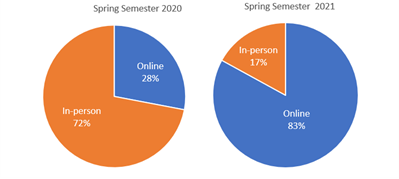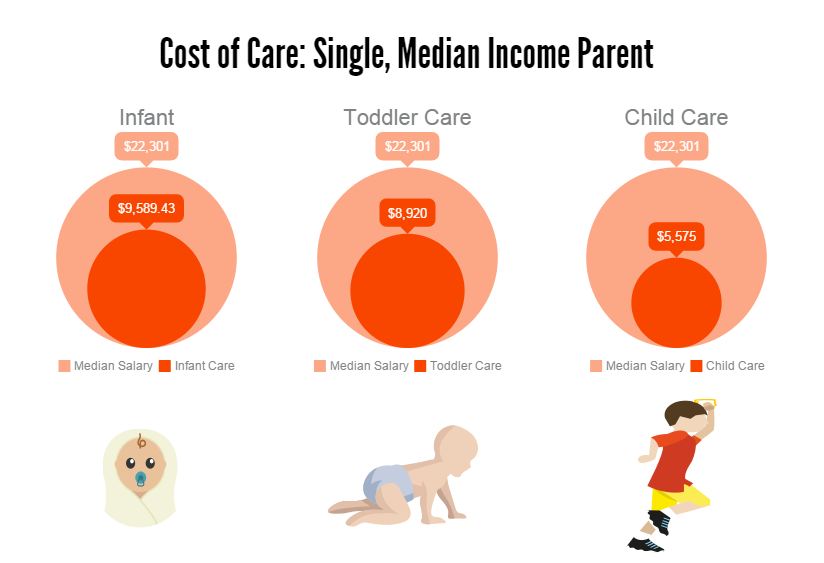New report reveals children and families struggling during COVID-19 and recommends ways to respond
Maine performed relatively well compared to other states on issues of access to health care, food security, housing stability, and mental health, according to Kids, Families and COVID-19: Pandemic Pain Points and the Urgent Need to Respond , a 50-state report of recent household data developed by the Annie E. Casey Foundation analyzing how families are faring during the COVID-19 crisis.
This KIDS COUNT report examined data from weekly surveys conducted by the U.S. Census Bureau that demonstrate how families across the country are challenged to meet basic needs during this global public health crisis while managing school, work and mental health. The Foundation finds the concurrent health and economic crises are exacerbating trends that show vulnerable families are unable to fulfill basic needs.
In assessing food security, the ability to make rent or mortgage payments, health insurance status and mental health concerns, the Foundation identified four pain points for children and families that require immediate action for relief and an opportunity to build a more equitable future. Key findings include:
- One in seven families with children (14%) said that in the most recent week, there was sometimes or always not enough to eat in the household. In Maine, that figure was 7%.
- Nearly one in five households with kids (18%) said they had only slight confidence or no confidence that they would be able to make their next rent or mortgage payment on time; that’s compared to 12% in Maine.
- One in eight families with children (12%) lacks health insurance , a figure which has been worsening over the past four years. In Maine, 5% of those surveyed did not have health insurance coverage.
- A fifth of respondents with children in their households (21%) reported that they had felt down, depressed, or hopeless in the previous week, indicating a widespread need for access to mental health care . In Maine, that number is 18%.
Additionally, in a survey conducted by Washington University in St. Louis, a third of those with children reported they are less likely to return to work because they lack child care (32%). Without child care, an enormous portion of the nation’s workforce could be sidelined from being able to support their families, which could hold the country back from returning to full economic strength.
The report recommends that federal and state lawmakers provide relief grants to ensure center- and home-based child care providers are able to survive the pandemic. Lawmakers should also work to increase access to high-quality and affordable care for families, and improve wages and working conditions for the child care workforce.
The report shows how urgent state and federal intervention is to the health and well-being of families with children. In Maine, the worst effects of food insecurity were mitigated by the robust response of the already existing statewide network of food pantries. The state also took action to provide substantial financial support to schools in reopening safely, and ensured funds were available to provide needed housing assistance.
While the percentages of families experiencing hardship in Maine appear relatively low compared to other states and the national average, they still represent significant numbers of children and parents in our communities who are struggling most during this crisis. The Maine Children's Alliance urges policymakers to prioritize substantial additional federal funding necessary to mitigate the worst-case scenarios of hardship still being caused by the pandemic.
In closing, the Annie E. Casey Foundation calls upon policymakers and child advocates to unite across differences and put a COVID-19 response at the top of 2021 agendas to ensure that children have what they need to survive and thrive. In an adequate response, decisionmakers should:
- Put racial and ethnic equity first in policymaking by using disaggregated data and engaging community stakeholders. This should ensure that the policymaking process is informed by the diverse perspectives of those hardest hit by the crisis and created in partnership with communities. This approach should underpin concrete policy actions.
- Prioritize the physical and mental health of all children by guaranteeing that any vaccine will be available without cost as a factor and by retaining and strengthening the Affordable Care Act. To promote mental health, particularly in times of crisis, policymakers should work to reduce the student-to-school-counselor ratio in all school settings to levels recommended by mental health professionals.
- Help families with children achieve financial stability and bolster their well-being by expanding access to unemployment insurance for part-time and gig economy workers, low-wage workers and students and by expanding child care access. Additionally, policymakers should eliminate barriers to accessing Temporary Assistance for Needy Families (TANF), the Earned Income Tax Credit (EITC) and the Child Tax Credit (CTC). And beyond any temporary housing assistance programs aimed at heading off a foreclosure or eviction crisis, federal policymakers should expand the Section 8 Housing Choice Voucher program and increase the overall availability of public housing.
- Ensure schools are better funded, more equitably funded and ready to meet the needs of students disparately affected by the pandemic by boosting school funding to protect against the economic impact of the pandemic, build maintenance-of-equity requirements into relief packages and address disparities in technology access at home and in the classroom.
“America’s children are in crisis,” said Annie E. Casey Foundation President and CEO Lisa Hamilton. “All across the country, families with children are struggling to overcome an unprecedented convergence of emergencies. If we don't work together to address this crisis equitably in terms of both short-term relief and long-term recovery, an entire generation of children will face long-term effects.”






